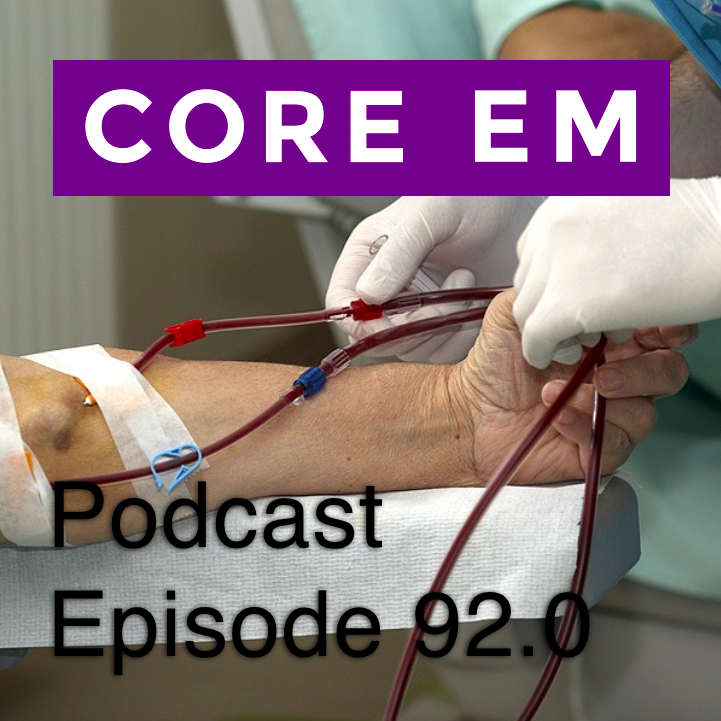This week we discuss some of the many dialysis-related emergencies we frequently see in the ED.
Episode 92.0 – Dialysis Emegencies
Show Notes
Take Home Points
- On any dialysis patient, make sure to do a good assessment of their access site. If it’s a fistula, assess for a thrill, for any warmth/induration/erythema and make sure they have distal sensation and perfusion. If it’s a catheter, evaluate for any signs of infection—so warmth, erythema or discharge.
- Bleeding is a big concern. If the patient is bleeding from their access, start with direct pressure to the bleeding site, then move on to topical thrombotic agents and if needed throw a figure 8 stitch with a 5-0 proline on a non-cutting needle.
- Peritoneal dialysis patients are at risk for bacterial peritonitis. In a PD patient that appears infected, get a peritoneal fluid sample and start antibiotics
- Dialysis patients are susceptible to dialysis disequilibrium syndrome which can present as altered mental status, focal neurological deficits or even frank coma or seizures after dialysis. Make sure to consider a broad differential in these patients and start with a solute load such as an amp or two of D50 while starting your work up.
Core EM: Hyperkalemia
Core EM: Episode 7.0 – Hyperkalemia + Rate Control in AFib
Al Sacchetti: ED Repair of Bleeding Dialysis Shunt
EM: RAP: Episode 107 – Dialysis Emergencies
EMBlog Mayo Clinic: How to Stop a Post-Dialysis Site Bleeding
emDocs: Managing Fistula Complications in the Emergency Department



Great podcast. However, as a renal dialysis professional, I have to say that to stop bleeding use 2 fingers. If the access is bleeding a profusely then hold pressure at the anastomosis.